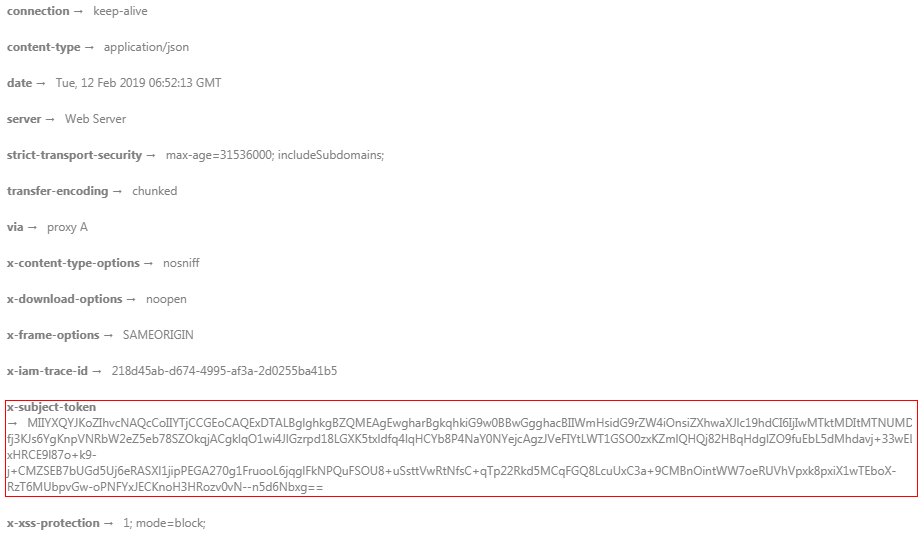Response
Status Code
After sending a request, you will receive a response, including a status code, response header, and response body.
A status code is a group of digits, ranging from 1xx to 5xx. It indicates the status of a request. For more information, see Status Code.
For example, if status code 201 is returned for calling the API used to obtain a user token, the request is successful.
Response Header
A response header corresponds to a request header, for example, Content-Type.
Figure 1 shows the response header for the API of obtaining a user token, in which x-subject-token is the desired user token. This token can then be used to authenticate the calling of other APIs.
Figure 1 Header of the response to the request for obtaining a user token

(Optional) Response Body
A response body is generally returned in a structured format, corresponding to the Content-Type in the response header, and is used to transfer content other than the response header.
The following shows part of the response body for the API to obtain a user token. For the sake of space, only part of the content is displayed here.
{"token": {"expires_at": "2019-02-13T06:52:13.855000Z","methods": ["password"],"catalog": [{"endpoints": [{"region_id": "xxxxxxxx",......
If an error occurs during API calling, the system returns an error code and a message to you. The following shows the format of an error response body:
{"error": {"message": "The request you have made requires authentication.","title": "Unauthorized"}}
In the preceding information, error_code is an error code, and error_msg describes the error.
- Status Code
- Response Header
- (Optional) Response Body